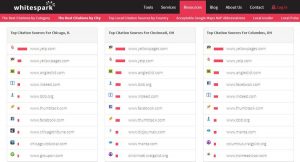If you are, then it’s time to rethink your strategy. Columnist Jeffrey L. Cohen explains why the right marketing automation program will help you target prospects with the stories they care about.

We’ve all been to office parties where someone ordered pizza — but what about the ones where they go for lowest common denominator pizza? That’s right. Someone just ordered six cheese pizzas. It doesn’t matter if you’re a carnivore or an herbivore, this pizza works for you. It might remind you of a kid’s birthday party, but generally, no one is offended.
This is not how to market in the real world. We don’t want to tell everyone the same story. And even though cheese pizza brings to mind different things to different people, it represents an undifferentiated message.
This makes even less sense in the digital world. But this is what so many marketers do with batch-and-blast emails. They treat everyone the same.
Think how much happier people would be if you had the ability to offer them a slice of pizza with their favorite toppings. That’s targeting.
And when you get a group together with similar preferences — for example, those who all like pepperoni — that’s a segment.
Marketing automation lets marketers target and segment their prospects with the precision of a well-placed pepperoni. You can track activities and actions from your owned, earned, and paid channels to target the right people with the right message. Consider offline behavior, too.
Gathering this information can make your marketing more efficient. Don’t waste your time and resources on people who (based on their actions) will never buy from you. Relevant targeting will increase the ROI of your marketing.
According to a Razorfish study, 76 percent of marketers don’t use any behavioral data in their segmentation and targeting. There are a variety of reasons for this, but one might be limitations in their marketing automation systems. Not all systems have the ability to capture and use behavioral data.
Know your prospects like you know yourself
A complete contact record includes both internally and externally collected data. The internal data starts with what prospects provide when filling out a lead form. These are things like job title and company. It includes behavioral activities like email opens and clicks, offers responded to, content downloaded, and even offline events attended. These can also include other data from your CRM and which pages they visited on your website.
External data can come from a variety of sources, like list purchases and data appended from other services. But the more powerful source is the collection of online activities used to determine interests, behavior and preferences called Digital Body Language. This is an indication of how your prospects are actually interacting with your brand online.
And here’s where the magic happens. With all this data at your fingertips, you can create segments of prospects with the most relevant details and easily target those individuals with specific stories or messages.
Many marketing automation programs cannot go beyond segmenting based on campaign activities. You will be more successful in your targeting if you have the ability to incorporate this broader range of online and offline behavior.
Listen, learn, then talk
The more you know about a prospect, the better you can market to them. That is obvious. But you also want to avoid seeming like a stalker.
The range of prospect responses to marketing based on gathered data goes from annoyance about a loss of privacy to a creepy feeling that someone is watching everything they do. There is no more gee-whiz wonder around “How did they know that about me?”
But what if you think about targeting as a better way to talk to prospects and tell them stories about things they care about or have shown an interest in? Conversations are based on listening, learning and talking. This is another version of the same thing. That’s one-to-one marketing using technology.
If you design marketing programs around this idea, you need to start with a detailed profile. This includes gathering behaviors, preferences, activities and sentiments from a variety of online and offline sources.
Having the data is just the start. You need to be able to act on it.
A profile is not a static collection of data points. As prospects continue to interact with your brand, they are continuing to let you know what interests them. This allows you to be more relevant because you can use the latest behavioral data to execute your campaigns.
Target your ideal audience based on anything
When it comes time to build a segment, a prospect’s response to a single campaign is just the start of the possibilities. Their explicit information — like industry and organization size — is available for targeting.
But what if you have some unique piece of data that you want to base your segments on, like shoe size, hair color, or purchasers of a specific product? Your creativity in designing segments is only limited by the data that you have — and maybe your marketing automation system if it doesn’t support custom objects.
Refine your audience with the ability to store custom data against contact and account records. This will guarantee that you’re targeting the right audiences with the right messaging throughout their path to purchase.
Segmentation and targeting are crucial elements of any marketing automation program, but their functionality can vary widely. If you want to use these tools to truly improve your marketing and tell the right story to the right prospects, make sure you have the flexibility to segment on as many factors as possible.
Some opinions expressed in this article may be those of a guest author and not necessarily Marketing Land. Staff authors are listed here.
Marketing Land – Internet Marketing News, Strategies & Tips
(25)








